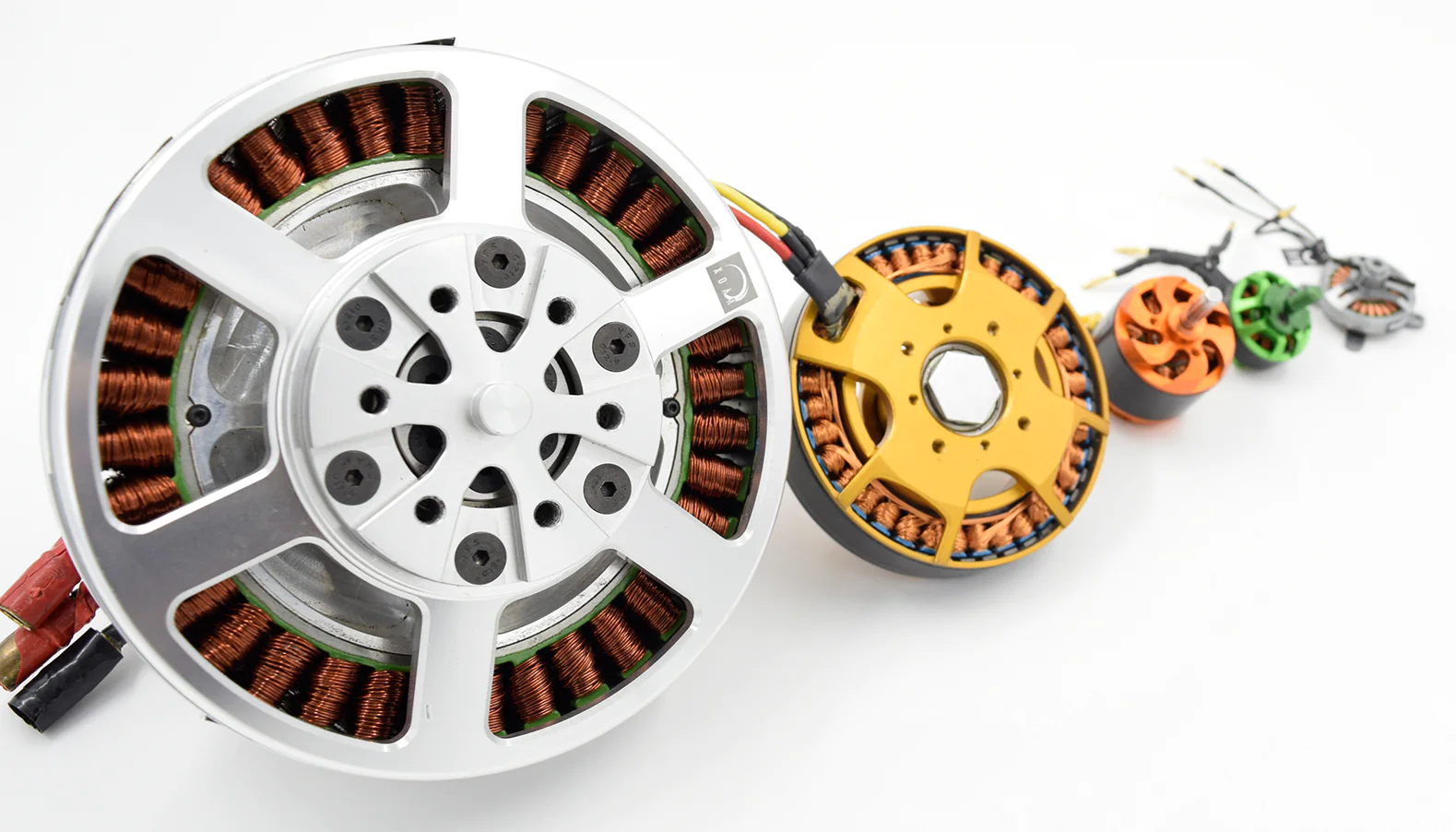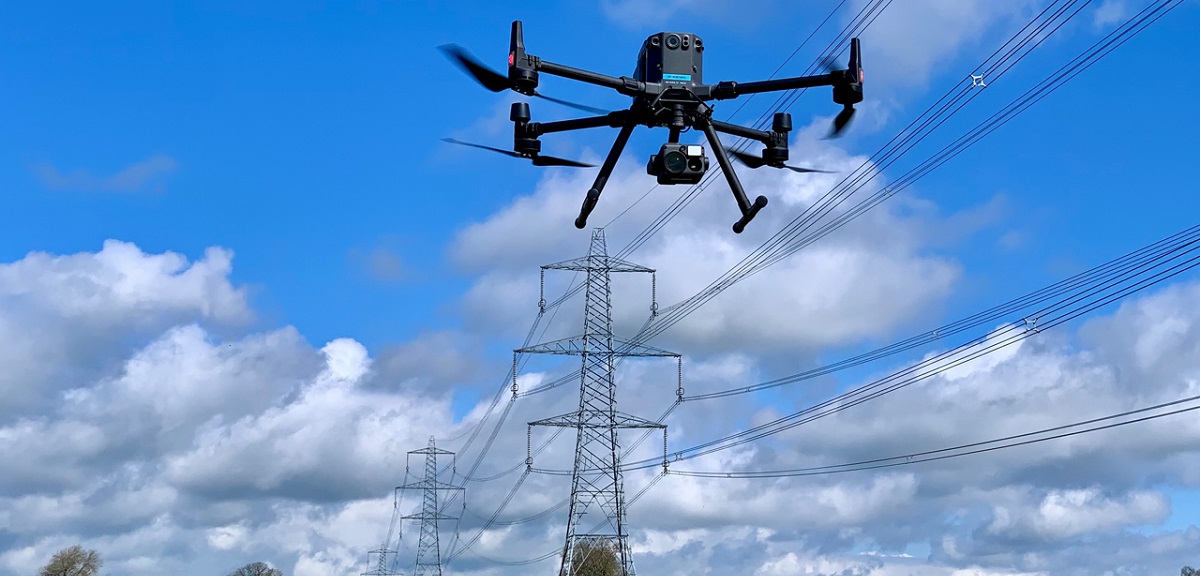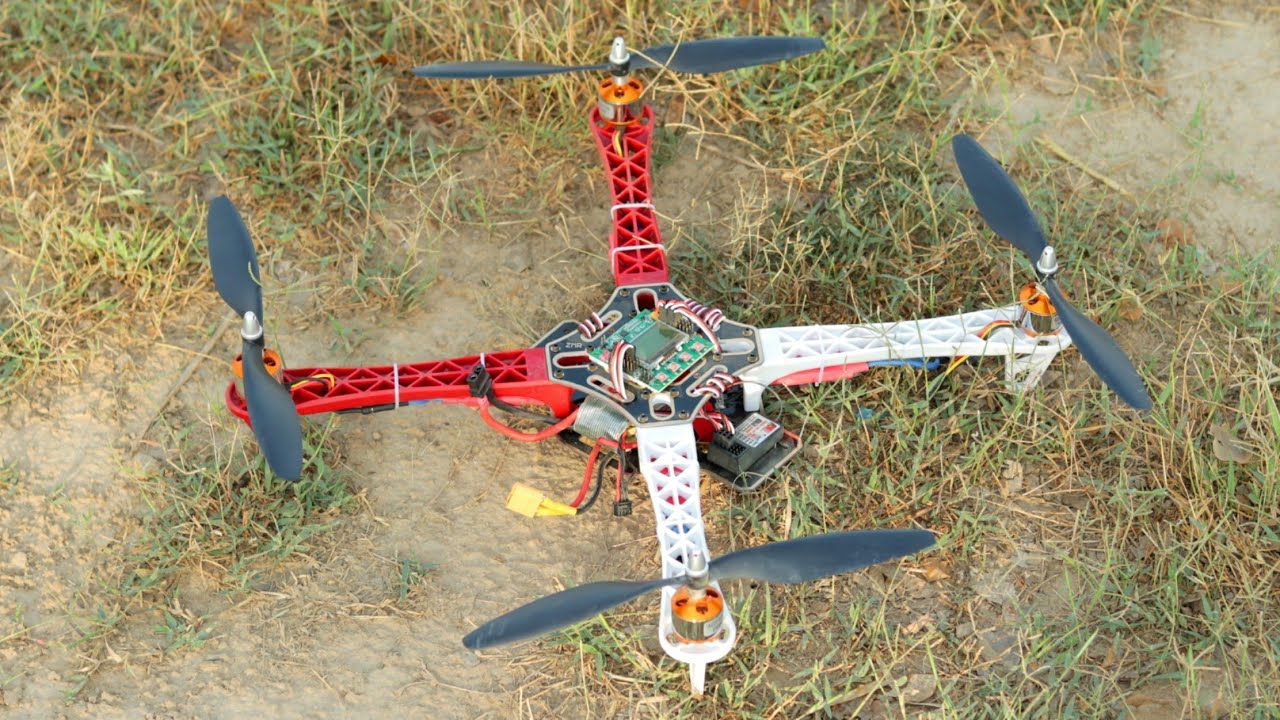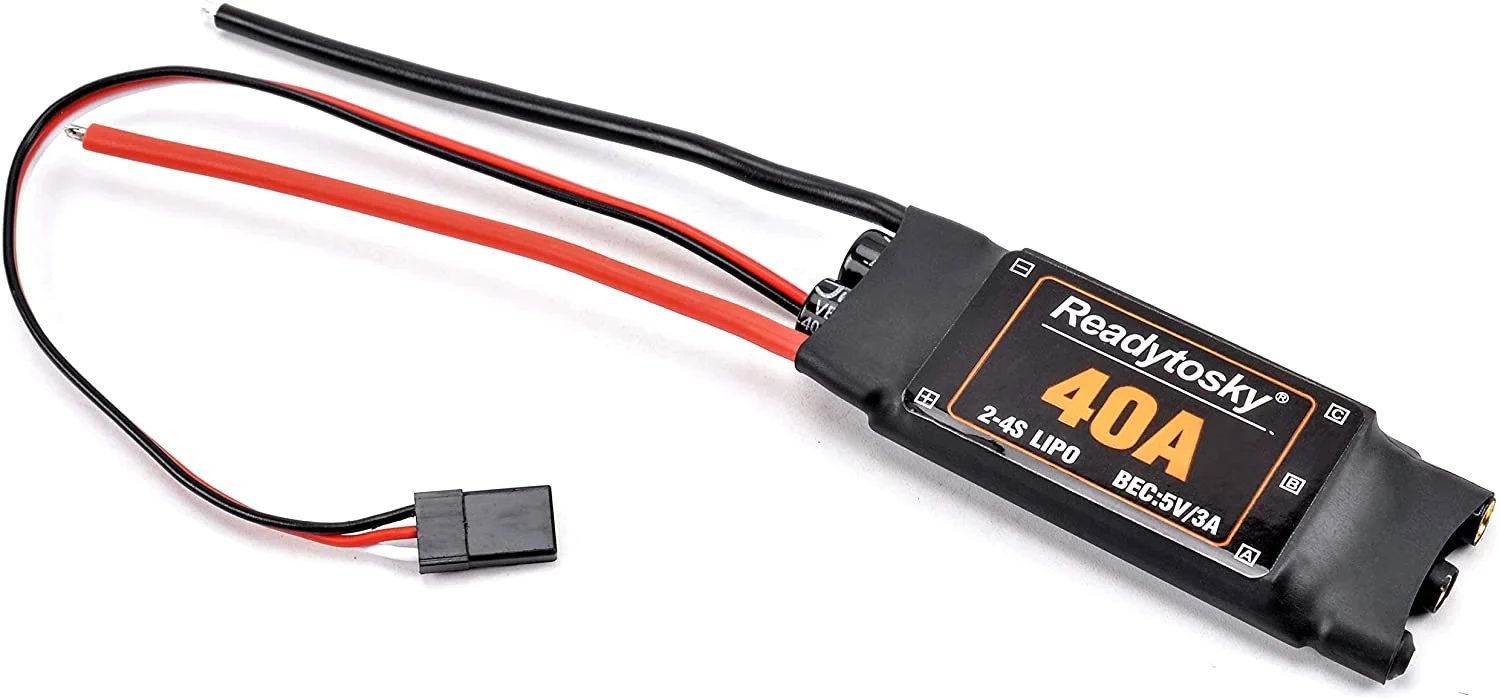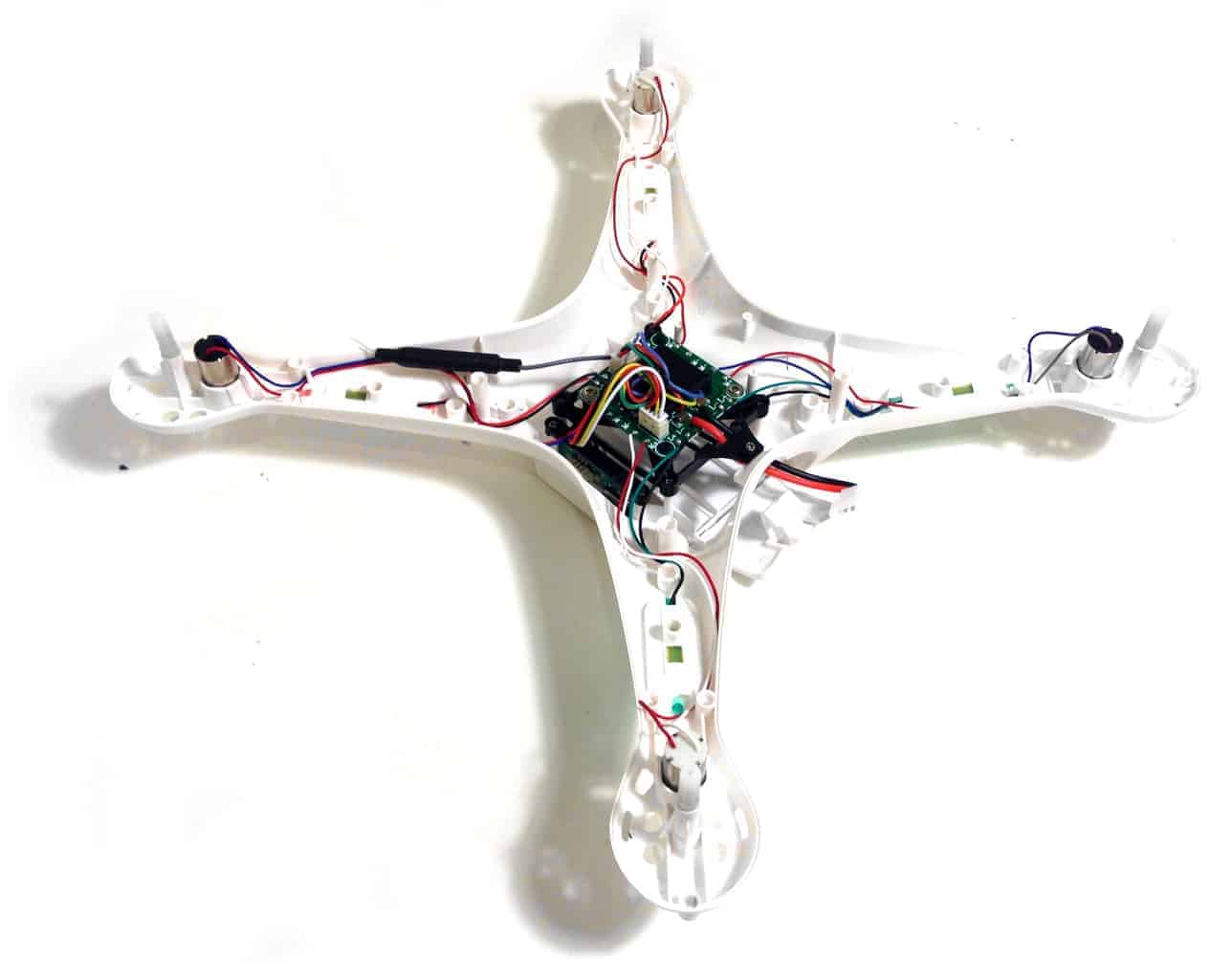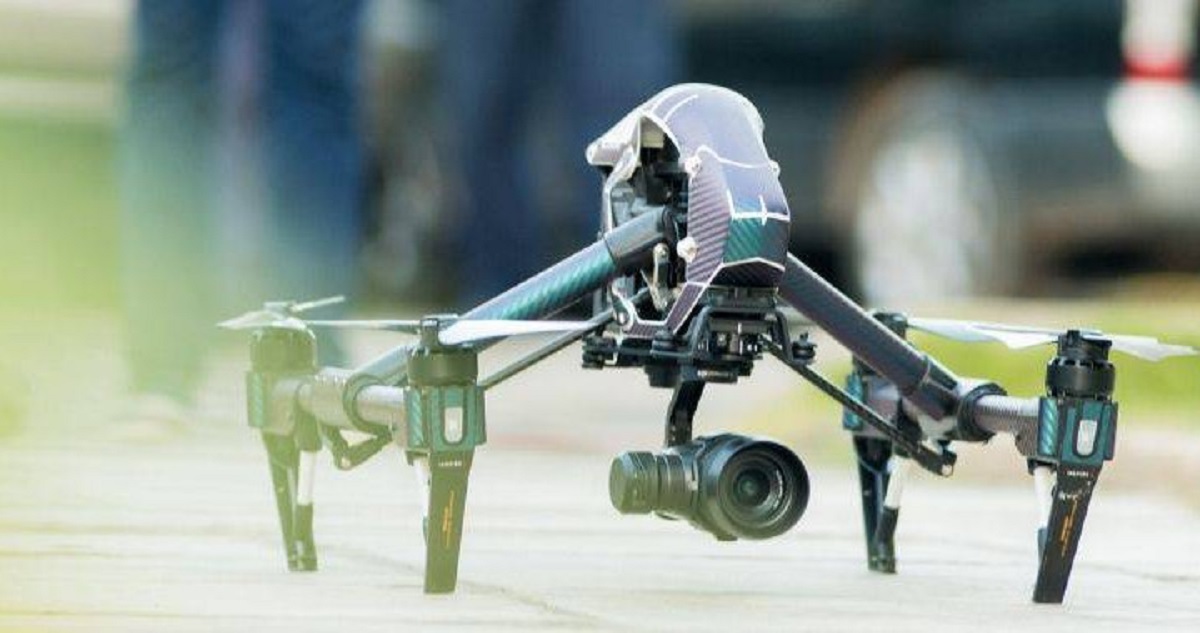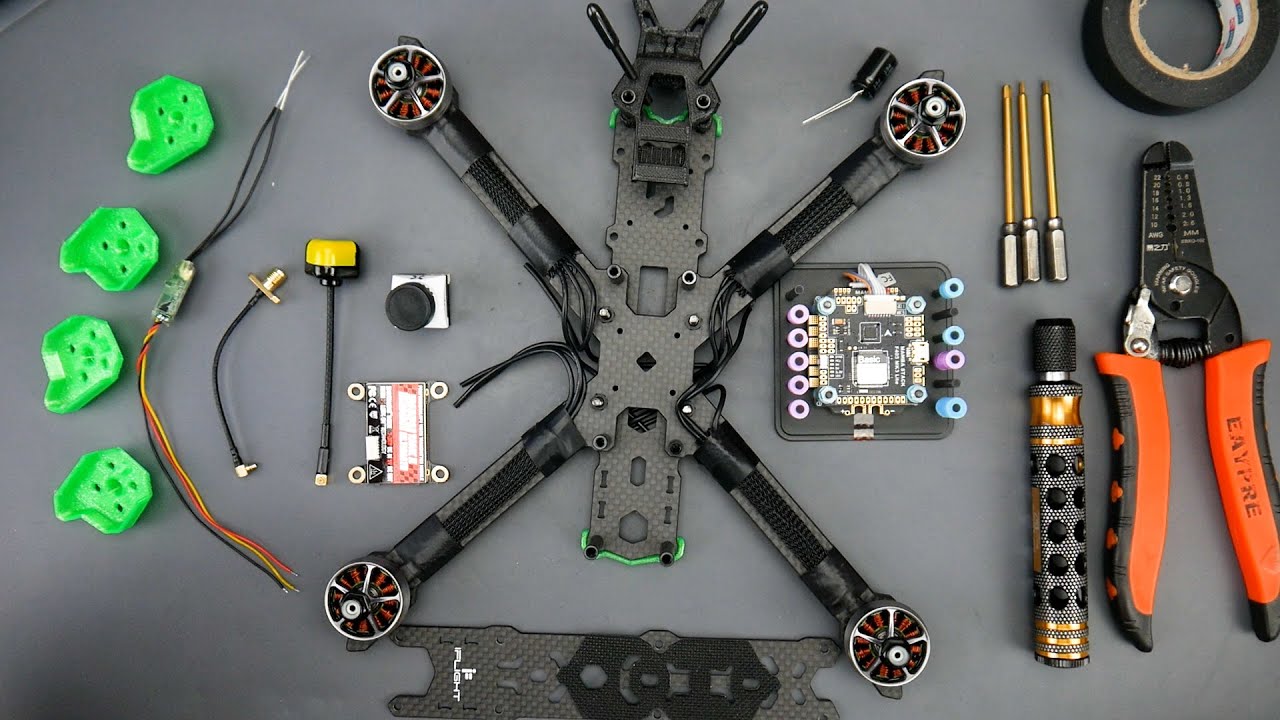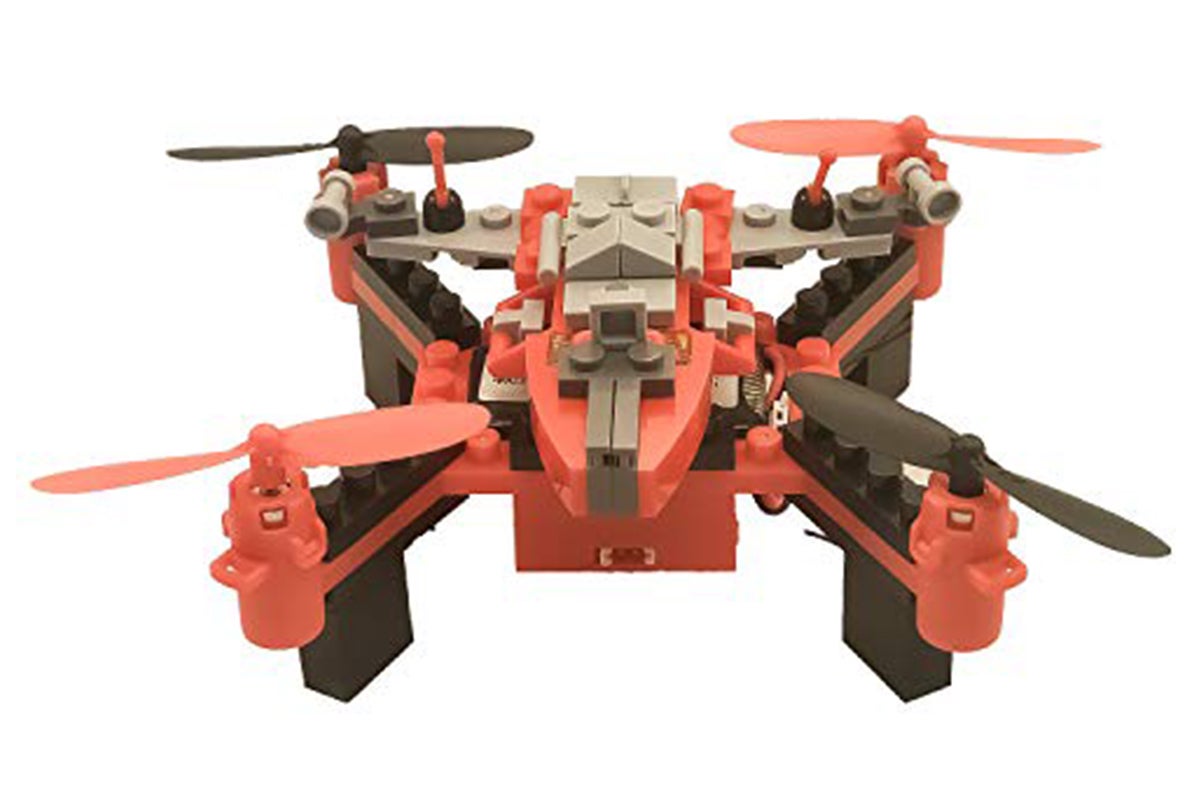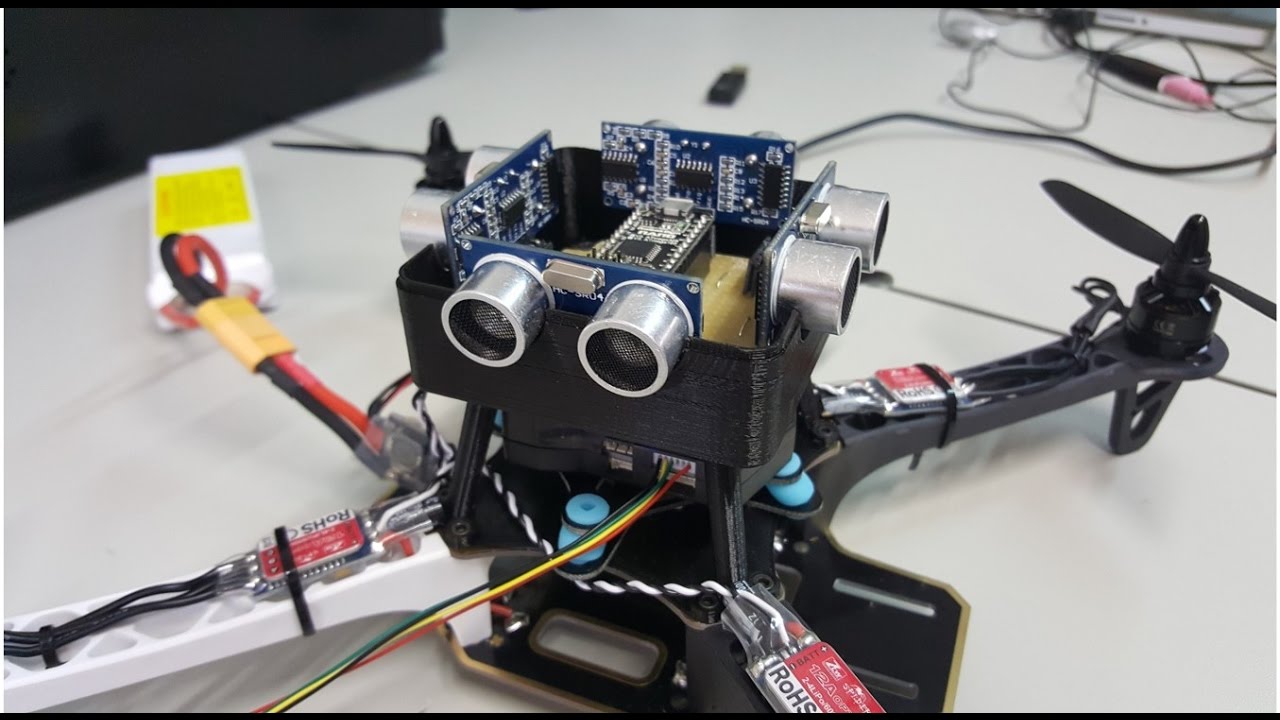Introduction
Drones, also known as unmanned aerial vehicles (UAVs), have become increasingly popular in recent years. These versatile devices are used for various purposes, such as aerial photography, videography, delivery services, and even recreational flying. One of the essential components that enable drones to take flight and perform their tasks is the drone motor.
Drone motors can be likened to the engine of an aircraft. They are responsible for generating the necessary thrust to propel the drone through the air. Understanding how drone motors work can provide insights into their performance, efficiency, and overall capabilities.
In this article, we will delve into the workings of drone motors, explore their basic components, and explain the differences between brushed and brushless motor types. We will also discuss the factors that influence the performance of drone motors, common issues encountered, and offer tips for maintaining these crucial components.
Whether you are a drone enthusiast, a professional photographer, or simply curious about how these incredible machines operate, this article will provide you with a comprehensive overview of the inner workings of drone motors. So, let’s dive in and demystify the magic behind these marvels of modern technology.
What are drone motors?
Drone motors are the powerhouses that enable the aircraft to generate the necessary thrust for flight. They work in conjunction with other components like propellers and speed controllers to control the movement and stability of the drone. Similar to the engine of a car, drone motors are the driving force behind the UAV’s ability to lift off, maneuver, and perform complex aerial tasks.
These motors are specifically designed for the unique requirements of drones, such as compact size, lightweight, and high power output. They come in different sizes and configurations, allowing drone enthusiasts and professionals to choose the motor that best suits their specific application and desired performance.
The performance of a drone motor is primarily determined by its power output, measured in watts or kilowatts (kW). This power rating determines the amount of thrust the motor can generate and therefore affects the drone’s payload capacity, speed, and maneuverability. Additionally, other factors like efficiency, durability, and responsiveness also play a crucial role in selecting the right motor for a particular drone.
Drone motors are typically categorized as either brushed or brushless motors. Brushed motors have been around for a long time and have a simpler design, whereas brushless motors are a newer and more advanced technology. Both types have their advantages and disadvantages, and the choice between them depends on various factors, including the specific application, budget, and desired performance.
In the next sections, we will explore the basic components of a drone motor and delve into the inner workings of both brushed and brushless motors. Understanding these fundamental concepts will shed light on the differences between the two types and enable us to appreciate the intricacies of drone motor technology.
Basic components of a drone motor
To understand the inner workings of a drone motor, it is essential to familiarize ourselves with its basic components. While the specific design and configuration may vary depending on the motor type and manufacturer, certain key elements are common to most drone motors.
1. Stator: The stator is the stationary part of the motor and consists of metal coils wound around a central iron core. These coils are usually made of copper wire and are responsible for generating the magnetic field necessary for motor operation.
2. Rotor: The rotor is the rotating part of the motor, connected to the propeller. It is typically composed of permanent magnets that interact with the stator’s magnetic field to produce torque and rotational motion.
3. Bearings: Bearings are used to support the rotor’s shaft, reducing friction and enabling smooth rotation. High-quality bearings are crucial for minimizing vibrations and ensuring efficient and reliable motor performance.
4. Brushes (for brushed motors): In brushed motors, brushes are used to transmit electrical current to the rotor’s windings. These small carbon-based components make contact with the commutator (a segmented metal ring on the rotor) and control the direction of current flow.
5. ESC (Electronic Speed Controller): Although not a part of the motor itself, the ESC is a vital component connected to the motor. It regulates the electrical signals sent to the motor, controlling its speed and direction. The ESC acts as a bridge between the motor and the flight controller or receiver, allowing precise control over motor performance.
These are the primary components of a typical drone motor. It’s worth noting that brushless motors do not have brushes or a commutator like their brushed counterparts, which simplifies their design and enhances reliability. Understanding these components lays the groundwork for comprehending the differences between brushed and brushless motor technologies, which we will explore in the upcoming sections.
Brushed vs Brushless Drone Motors
When it comes to drone motors, there are two main types: brushed and brushless. Understanding the differences between these two technologies is essential in selecting the right motor for your drone’s specific requirements.
Brushed Motors:
Brushed motors have been used in various applications for decades and have a relatively simple design. They consist of a rotor with windings and a commutator, as well as brushes that make contact with the commutator to control the flow of electrical current. The rotation of the rotor generates a magnetic field in the stator, which interacts with the magnets on the rotor to produce torque and rotation.
Advantages of brushed motors include their low cost, simplicity, and ease of maintenance. They are also known for their ability to generate high torque at low speeds, making them suitable for applications where precise control is required, such as aerial cinematography. However, these motors tend to be less efficient, have limited lifespan due to brush wear, and produce more heat and noise compared to brushless motors.
Brushless Motors:
Brushless motors, on the other hand, are a more recent and advanced technology commonly used in modern drones. They eliminate the need for brushes and commutators, resulting in a more efficient and reliable motor design. Instead of brushes, brushless motors employ electronic control systems to regulate the current flow to the motor windings.
Brushless motors offer numerous advantages over their brushed counterparts. They are more efficient, which means they can deliver higher power output with less energy consumption. This translates to longer flight times and improved overall performance. Brushless motors also have a longer lifespan, as they are not subject to brush wear. Additionally, they produce less heat and noise, making them ideal for applications that require reduced noise levels and heat dissipation.
However, brushless motors tend to be more expensive and require more complex electronic speed controllers (ESCs) to operate effectively. Additionally, they may not provide the same level of low-speed torque as brushed motors, which could be a consideration for specific applications.
In summary, brushed motors are suitable for those on a budget or who require precise low-speed control, while brushless motors offer higher efficiency, longer lifespan, and quieter operation. The choice between the two ultimately depends on the specific needs and preferences of the drone pilot or user.
How do Brushed Drone Motors Work?
Brushed drone motors are a commonly used type of motor in various applications. Understanding how they work can provide insights into their operation and performance.
Brushed motors consist of several key components: a rotor with windings, a stator with coils, and brushes that make contact with the commutator. When an electrical current is supplied to the motor, it flows through the brushes and into the rotor’s windings. The current creates a magnetic field around the windings.
The stator’s coils, also known as field coils, generate a second magnetic field when the current flows through them. The interaction between the magnetic field generated by the rotor and the magnetic field created by the stator causes the rotor to rotate.
The brushes play a crucial role in the process. As the rotor spins, the brushes make contact with the segmented commutator, which consists of insulated metal segments. The commutator acts as a switch, changing the direction of current flow in the windings as the rotor rotates.
By constantly alternating the current direction in the windings, the magnetic field generated by the rotor interacts with the stator’s magnetic field, continuously propelling the rotor and generating rotational motion. This rotation is then transferred to the drone’s propellers, creating thrust for flight.
One of the advantages of brushed motors is their ability to generate high torque at low speeds, making them suitable for applications that require precise control, such as aerial photography or cinematography. However, brushed motors are known to be less efficient, generate more heat and noise, and have a shorter lifespan compared to brushless motors.
In terms of maintenance, brushed motors require periodic inspection and brush replacement, as the brushes can wear down over time. Regular cleaning and lubrication of the bearings are also recommended to ensure optimal motor performance and longevity.
Overall, brushed motors have a simple and straightforward design, making them a popular choice for certain applications. However, their limitations in terms of efficiency and lifespan have led to the emergence of the more advanced and efficient brushless motor technology, which we will explore in the next section.
How do Brushless Drone Motors Work?
Brushless drone motors are a more advanced and efficient type of motor commonly used in modern drones. Understanding how they work can shed light on their superior performance and reliability.
Unlike brushed motors, brushless motors do not have brushes or a commutator. Instead, they utilize electronic control systems to regulate the flow of current to the motor windings. This design eliminates many of the drawbacks associated with brushed motors, such as brush wear, lower efficiency, and increased heat generation.
The basic components of a brushless motor include a rotor with permanent magnets and a stator with coils of wire. The stator’s coils, also known as windings, are positioned around the inside perimeter of the motor, while the permanent magnets are embedded in the rotor.
When an electrical current is supplied to the motor, the electronic speed controller (ESC) sends the appropriate sequence of electrical pulses to the motor’s windings. These pulses create a rotating magnetic field, thanks to the specific timing and switching patterns of the current flow.
As the rotor’s permanent magnets pass by the energized coils, the magnetic field of the rotor interacts with the magnetic field generated by the stator. This interaction produces torque, propelling the rotor and enabling rotation.
Unlike brushed motors, brushless motors have a more efficient design. By eliminating brushes and the commutator, there are fewer moving parts, which reduces friction and heat generation. This results in higher overall efficiency, less power loss, and improved performance.
Additionally, brushless motors have a longer lifespan compared to brushed motors. Since there are no brushes to wear down, the maintenance requirements are reduced, making them more reliable and cost-effective in the long run.
Another advantage of brushless motors is their ability to provide smoother and more precise control. The electronic speed controller (ESC) communicates with the flight controller or receiver, allowing for rapid adjustments in motor speed and response. This responsiveness is particularly beneficial for maneuvers requiring quick changes in thrust, such as aerial acrobatics or high-speed flights.
In summary, brushless drone motors offer improved efficiency, longer lifespan, and greater control compared to brushed motors. Their advanced design and electronic control systems make them the preferred choice for many drone enthusiasts and professionals.
Factors that Affect Drone Motor Performance
The performance of a drone motor is affected by various factors that can impact its efficiency, power output, and overall effectiveness. Understanding these factors is essential for optimizing motor performance and ensuring optimal drone flight. Let’s explore some of the key factors that can influence drone motor performance.
1. Motor Size and Kv Rating: The size of the motor and its Kv rating (rotational speed per volt) determine the motor’s power output and torque. Larger motors generally provide higher thrust, enabling the drone to carry heavier payloads or achieve faster speeds. The Kv rating affects the motor’s RPM (revolutions per minute) at a given voltage, influencing the drone’s responsiveness and flight characteristics.
2. Battery Voltage and Capacity: The voltage and capacity of the drone’s battery play a vital role in motor performance. Higher voltage batteries can deliver more power to the motors, enabling increased thrust and speed. Battery capacity affects flight time, as motors consume energy from the battery. Choosing the right battery voltage and capacity for a specific motor and drone configuration is crucial for optimal performance.
3. Propeller Size and Pitch: The size and pitch of the propellers connected to the motor significantly impact motor performance. Larger propellers move more air, resulting in increased thrust but potentially higher power consumption. The pitch determines the distance the propeller travels in one revolution, affecting the thrust and speed capabilities of the motor.
4. Efficiency of Electronics: The efficiency of electronic components in the drone, such as the electronic speed controller (ESC) and flight controller, can impact motor performance. High-quality ESCs and flight controllers can optimize power delivery to the motors, resulting in smoother operation and improved responsiveness.
5. Ambient Temperature: The temperature in which the drone operates can affect motor performance. In extreme cold or hot conditions, the motor may experience reduced efficiency and performance due to the effects on battery performance and overall system operation. It is important to consider temperature limitations and employ proper cooling systems if necessary.
6. Aerodynamic Design: The aerodynamic design of the drone, including its frame, body, and propeller placement, can impact motor performance. A streamlined and well-balanced design reduces drag and allows the motors to operate more efficiently, resulting in improved flight performance and longer battery life.
Considering these factors when selecting and configuring drone motors is essential for achieving optimal performance and flight characteristics. It is recommended to carefully evaluate the specific requirements of the drone’s application and choose components that are well-matched to maximize performance and efficiency.
Common Issues with Drone Motors
As with any mechanical component, drone motors can experience various issues that may affect their performance and reliability. Understanding these common issues can help drone enthusiasts and professionals identify and address problems promptly. Let’s explore some of the most common issues encountered with drone motors.
1. Motor Overheating: Motor overheating is a common issue, especially during prolonged or high-intensity flights. Excessive heat can damage the motor windings, bearings, or other internal components, leading to reduced performance or even motor failure. Proper cooling measures, such as using propeller guards or adding external cooling fans, can help mitigate this issue.
2. Vibration and Imbalance: Vibrations and imbalance in drone motors can result in decreased performance, instability, and premature wear on the motor and other components. These issues can be caused by factors such as propeller damage, loose motor mounts, or misalignment. Regular maintenance and inspection, along with proper balancing techniques, can help minimize vibrations and ensure optimal motor performance.
3. Propeller Strikes: The propellers of a drone can collide with various objects, leading to damage or even complete loss of the motor. This can occur during crashes, misjudged landings, or collisions with obstacles. It’s crucial to carefully inspect the propellers and motors after any incident and replace any damaged components to prevent further issues.
4. Electrical Issues: Electrical issues can arise in drone motors, such as faulty wiring, loose connections, or damaged ESCs. These issues can result in intermittent power loss, erratic motor behavior, or complete motor failure. Regular inspection of the electrical components, ensuring secure connections, and addressing any wiring issues can help prevent or resolve such problems.
5. Foreign Object Damage: Drone motors are susceptible to damage from foreign objects, such as dirt, debris, or small particles. These objects can get lodged in the motor housing or affect the rotational mechanism, leading to reduced performance and increased wear. Regular cleaning and proper maintenance, including using protective filters and covers, can help prevent foreign object damage.
6. Motor Failure: In some cases, drone motors may experience complete failure due to various factors, including prolonged use, manufacturing defects, or excessive stress on the motor. Motor failure can result in the motor seizing, producing no thrust, or even causing a crash. In such instances, it is necessary to replace the motor with a new one.
Understanding these common issues and taking proactive measures to address them will contribute to the longevity and reliable performance of drone motors. Regular maintenance, careful flight handling, and paying close attention to any signs of motor issues can help mitigate potential problems and ensure a smooth and enjoyable drone flying experience.
Tips for Maintaining Drone Motors
Proper maintenance of drone motors is essential to ensure their longevity, optimal performance, and overall reliability. By implementing regular maintenance practices, drone enthusiasts and professionals can prevent issues and keep their motors in top condition. Here are some tips for effectively maintaining drone motors.
1. Inspect Motors Regularly: Regularly inspecting the motors is crucial for identifying any signs of wear, damage, or loose components. Check for loose screws, bent motor shafts, or damaged wires. Addressing these issues promptly can prevent further damage and ensure optimal motor performance.
2. Clean Motors and Propellers: Regularly clean the motors and propellers to remove dirt, dust, and debris that can affect motor performance and cooling. Use a small brush or compressed air to gently clean the motor and propeller surfaces, paying attention to the crevices and hard-to-reach areas.
3. Balance the Propellers: Imbalanced propellers can cause vibrations and put unnecessary stress on the motors. Use a propeller balancer to check the balance of each propeller, and add small adhesive weights to balance them if necessary. Balancing the propellers can significantly improve motor performance and reduce wear.
4. Monitor Motor Temperatures: Keep an eye on the motor temperatures during flights. Excessive heat can indicate potential motor issues or inadequate cooling. If the motors become too hot, allow them to cool down before the next flight or consider adding cooling accessories, such as external fans or heat sinks.
5. Ensure Proper Battery Care: The battery plays a crucial role in motor performance. Proper care and maintenance of the battery, including regular charging and storage according to manufacturer guidelines, ensures consistent power delivery to the motors. Avoid over-discharging or overcharging the battery, as this can damage both the battery and the motors.
6. Use Quality Propellers: Invest in high-quality propellers that are designed for your specific drone model and motor configuration. Quality propellers are less likely to break or cause vibrations, ensuring smooth and efficient motor operation. Replace damaged or worn-out propellers promptly to prevent further issues.
7. Firmware and Software Updates: Stay up to date with firmware and software updates for your drone and its components, including the motors. These updates often include performance optimizations and bug fixes that can improve motor efficiency and reliability.
By following these maintenance tips and incorporating them into your routine, you can help prolong the lifespan of your drone motors and ensure optimal performance during every flight. Regular inspection, cleaning, balancing, and monitoring will contribute to a safer and more enjoyable drone flying experience.
Conclusion
Drone motors play a crucial role in the performance and functionality of drones, enabling them to take flight, maneuver, and perform a multitude of tasks. Whether you are a drone enthusiast or a professional drone pilot, understanding how drone motors work and how to maintain them is essential for optimal performance and longevity.
In this article, we explored the basics of drone motors, including their components and the differences between brushed and brushless motor types. We also discussed the factors that can impact motor performance, common issues encountered with drone motors, and valuable tips for maintaining them.
By selecting the right motor type for your drone’s applications, considering factors like motor size, battery voltage, and propeller configuration, you can maximize the performance and efficiency of your drone. Regular inspection, cleaning, and balancing of motors, along with proper care of the battery and firmware updates, are key maintenance practices that will help you keep your drone motors in optimal condition.
Remember to monitor motor temperatures and address any signs of wear, damage, or loose components. By following these maintenance tips and being attentive to the needs of your drone motors, you can ensure their reliability and enjoy a seamless flying experience.
Drone technology continues to evolve, and advancements in motor design and performance are constantly being made. Staying informed about new developments and best practices in drone motor maintenance will enable you to make the most out of your drone and explore new possibilities in aerial photography, videography, and other drone applications.
So, take to the skies with confidence, armed with the knowledge and understanding of how drone motors work and how to maintain them. Fly safely, responsibly, and enjoy the incredible possibilities that drones offer.







